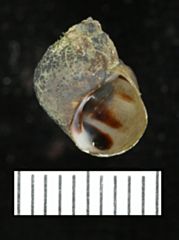Project 2192: N. V. Whelan, E. E. Strong. 2015. Morphology, molecules, and taxonomy: extreme incongruence in pleurocerids (Gastropoda, Cerithioidea, Pleuroceridae). Zoologica Scripta. 45 (1):62-87.
Abstract
Pronounced mitochondrial heterogeneity within putative species of Pleuroceridae has prevented meaningful systematic revisions of this critically imperiled freshwater family. Previous studies have demonstrated that this mitochondrial diversity often produces polyphyletic species on mitochondrial gene trees, but its significance is unclear. Hypotheses advanced to explain this pattern have included cryptic species, retained ancestral polymorphisms, and introgression; other possible explanations such as doubly-uniparental inheritance or the presence of pseudogenes have not been given due consideration. Previous analyses have not included adequate sampling, neither in terms of number of individuals nor in geographic coverage, to adequately test any of these hypotheses. In order to fully characterize mitochondrial heterogeneity in pleurocerids and robustly assess possible causal explanations, we collected 239 individuals representing four putative species from seven sites and sequenced the COI and 16S rRNA mitochondrial genes and the H3 nuclear gene for all individuals. We also used whole genome shotgun sequencing to construct and annotate a mitochondrial genome for one individual. Characters with demonstrated utility in morphospecies delineation of gastropods (head-foot coloration, shell and radular morphology, pallial oviduct anatomy) were examined for a subset of individuals to determine if morphology co-varied by haplotype clade. We found pronounced mitochondrial heterogeneity at both the population- and species-level in three of the species examined, but our data reject paralogous nuclear copies of mitochondrial genes (NUMTs) and doubly uniparental inheritance as causal mechanisms, and there was no evidence of cryptic diversity. Mutation rates were found to differ significantly among mitochondrial lineages, and population genetic statistics revealed a signature of balancing selection that could be acting to maintain this diversity. Although questions remain concerning the precise cause(s) of intraspecific mitochondrial diversity in pleurocerids, nuclear and/or genomic data, combined with anatomical and life history investigations in an integrative phylogenetic context, is the most promising avenue for resolving pleurocerid systematics.Read the article »
Article DOI: 10.1111/zsc.12139
Project DOI: 10.7934/P2192, http://dx.doi.org/10.7934/P2192
| This project contains |
|---|
Download Project SDD File |
Currently Viewing:
MorphoBank Project 2192
MorphoBank Project 2192
- Creation Date:
12 June 2015 - Publication Date:
03 September 2015
This research
supported by
Authors' Institutions ![]()
- National Museum of Natural History, Smithsonian Institution
- University of Alabama

